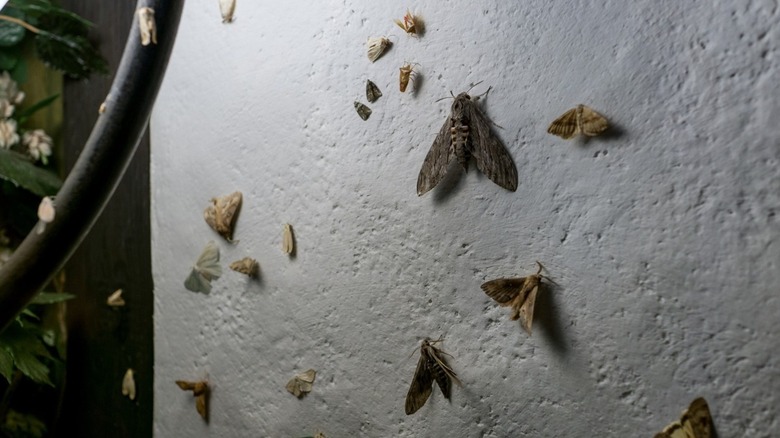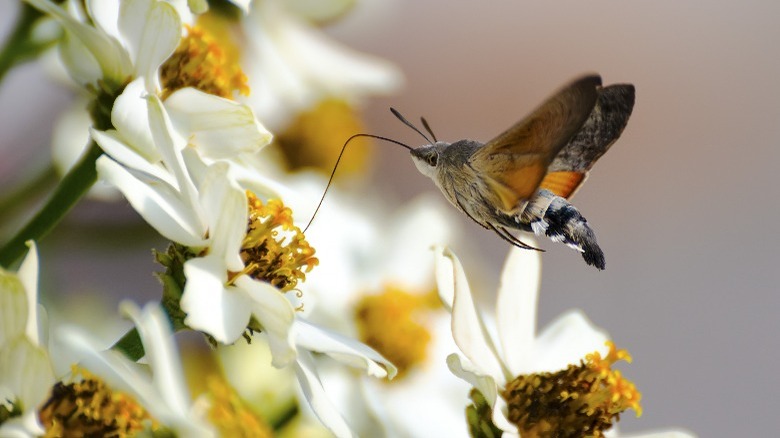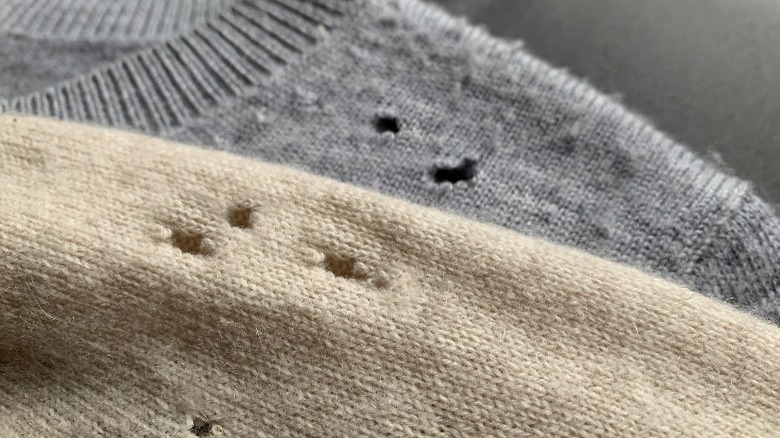Why You Should Think Twice About Repelling Moths From Your Garden
Moths evoke a range of reactions among people. On the one hand, some individuals appreciate their unique beauty, admiring their furry bodies and intricately patterned wings. On the other hand, some view them as less appealing than butterflies, which are often celebrated for their brighter, vivid colors and perceived gracefulness.
Unlike butterflies, which fly during the day, most moths are nocturnal; they are more active at night. They are often larger in size, and their flight patterns are faster and more erratic, particularly near light sources. It's also quite natural for people to feel a bit uneasy about nocturnal creatures — it taps into a basic human instinct that's wary of the unknown or the unexpected, particularly in the dark.
One particular reason why many people hate moths is because of the types that invade homes, destroy clothing, invade pantries, and, subsequently, contaminate food. But not all moths are pests. On the contrary, they play an essential role in the ecosystem.
Moths play an important role in the garden
Like butterflies and bees, moths are excellent plant pollinators. They feed on flower nectar, and therefore help with seed production. In fact, a 2023 study by Max Anderson, Ellen L. Rotheray, and Fiona Matthews found that moths were responsible for higher pollen deposition rates at night compared to bees during daytime. These nighttime pollinators also pollinate some of the rare wildflowers that bees skip. Moths can also cover greater distances than butterflies, allowing them to distribute pollen across more expansive areas, further contributing to the ecosystem.
When it comes to the food chain, moths, especially their caterpillars, are food for birds, amphibians, bats, small mammals, and other insects. Repelling these moths will likely have a serious effect on these species. Research showed that the decline in moths is related to the decline of bats and cuckoos over farmlands, highlighting the importance of moths in maintaining ecological balance and the potential consequences of disrupting their natural lifecycle.
Moths, owing to their widespread presence and sensitivity to environmental changes, also serve as excellent indicator species. By monitoring their populations, we can gain insights into various environmental shifts, including the effects of pesticides, new farming practices, and climate change.
What moths you do need to get rid of
There are a wide variety of moths, and some are indeed pests who eat clothes and contaminate food — these are the ones you want to repel from your house. But you don't have to panic at the first sight of a moth. Jason Dombroskie, the manager of Cornell University's Insect Collection and Insect Collection Lab, tells The New York Times that moths in your home are more likely to be eating your houseplants than your clothes.
That said, if you notice holes in your clothing items, particularly those made with cashmere, silk, and wool, you might have a cloth moth infestation. Fortunately, there are easy ways to deal with the less-desired moths. For example, using cedar pellets or granules, you can ward off those pesky pantry moths. You can also place strong-smelling spices in your closet to keep the moths out. Think cloves, black pepper, thyme, rosemary, and cinnamon. Nonetheless, don't group all moths in with these pesky invaders — because the ones in your garden are fulfilling an important purpose.


